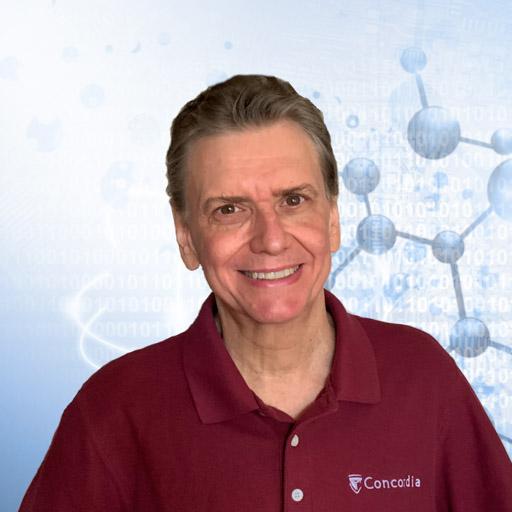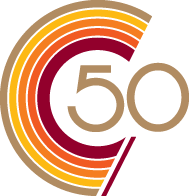
Gilles Peslherbe, PhD, FCIC
Thesis supervisor Seeking students
- Professor, Chemistry and Biochemistry
- Professor (cross-appointed), Physics
- Professor (cross-appointed), Chemical and Materials Engineering
- Centre for Research in Molecular Modeling (CERMM)
Are you the profile owner?
Sign in to editThesis supervision details
Supervised programs: Chemical Engineering (MASc), Chemistry (MSc), Physics (MSc), Nanoscience and Nanotechnology (MSc, MASc), Chemical Engineering (PhD), Chemistry (PhD), Physics (PhD)
Research areas: Computational Chemistry, Molecular and Reaction Dynamics, Nanomaterials and Materials Engineering, Chemical Biology, Therapeutics, Photochemistry, Ultrasfast Spectroscopy, Chemical Physics, Environmental Chemistry, Machine Learning, Quantum Computing
Contact information
Website:
Biography
Education
Diplôme d'Ingénieur Chimiste (Ecole Supérieure de Chimie Industrielle de Lyon, France)
PhD in Physical Chemistry with Minor in Computer Engineering (Wayne State University, USA)
Research interests
Physical, Theoretical and Computational Chemistry; Chemical Physics and Biology; Materials Science and Engineering; Environmental Chemistry; Therapeutics Development; Artificial Intelligence; Quantum Computing
Teaching
CHEM 235 - Kinetics of Chemical Reactions
CHEM 333 - Introduction to Quantum Theory
CHEM 431/631 - Computational Chemistry for Chemists and Biochemists
CHEM 498Q/630Q - Statistical Mechanics
For additional information, see course websites on Moodle
(registered students and users only)
Research activities
Chemical Modeling in the Materials, Life and Environmental Sciences
Areas of method development and application:
• Nanomaterials and materials engineering
• Photochemistry and ultrasfast spectroscopy
• Water structure and solvation effects on chemical structure and reactivity
• Chemical biology and therapeutics development
• First-principles, approximate and efficient molecular dynamics simulations
• Environmental chemistry
• Machine learning and quantum computing
Selected on-going research projects:
• Carbon chemistry, encapsulation and spin catalysis
• Dense transition metal nitride nanoparticles and materials
• Chemical interactions and reactions in clusters and at surfaces, capture and sensing afforded by organic/inorganic frameworks
• Chemical reactions in complex environments, environmental impact assessment and remediation
• Advanced materials for electrochemistry and next-generation batteries
• Chemistry in extreme conditions (high-pressure, high-temperature, cluster impact, mechanical wear)
• Charge-transfer-to-solvent phenomena in clusters
• Excited-state electron and molecular dynamics and femtosecond spectroscopy
• Water in confined environments
• Microsolvation in chemical reaction dynamics
• Solvation structure of molecular ions, thermodynamics and spectroscopy
• Molecular ions at interfaces and their effects on phase behavior and role in biology
• Diffusion and reaction of small molecules in proteins (myoglobin, hemoglobin, GAPDH)
• Enhanced sampling molecular dynamics simulations of proteins
• Small-molecule permeation of lipid bilayers
• Protein-protein interactions
Publications
Selected Invited Editorials and Comments
-
Dong-Qing Wei, Gilles H. Peslherbe, Gurudeeban Selvaraj* and Yanjing Wang, “Advances in Drug Design and Development for Human Therapeutics Using Artificial Intelligence – I”. Biomolecules 12, 1846-1848 (2022).
-
Gilles H. Peslherbe, “Solution Phase Interactions: Beyond the Typical Role of Solvent”, News and Views Article, Nature Chemistry 10, 899-900 (2018).
Selected Refereed Journal Articles
-
Sina Pourebrahimi,* Majid Pirooz, Alex De Visscher and Gilles H. Peslherbe, “Highly Efficient and Reversible Iodine Capture Utilizing Amorphous Conjugated Covalent Triazine-Based Porous Polymers: Experimental and Computational Studies”, Journal of Environmental Chemical Engineering 10, 107805 (2022).
-
Satyavani Kaliamurthi,* Gurudeeban Selvaraj,* Chandrabose Selvaraj, Sanjeev Kumar Singh, Dong-Qing Wei and Gilles H. Peslherbe, “Structure-based Virtual Screening Reveals Ibrutinib and Zanubrutinib as Potential Repurposed Drugs against COVID-19”, International Journal of Molecular Sciences 22, 7071-7092 (2021).
-
Philippe Archambault,* Yin Wei and Gilles H. Peslherbe, “Density-Functional Theory Studies of Vanadium Oxide Clusters and their Cations”, invited article for the Fernand Spiegelman special issue of Theoretical Chemistry Accounts 140, 121 (2021).
-
Gurudeeban Selvaraj,* Satyavani Kaliamurthi,* Gilles H. Peslherbe and Dong-Qing Wei, “Are the Allergic Reactions of COVID-19 Vaccines Caused by mRNA Constructs or Nanocarriers? Immunological Insights”, Interdisciplinary Sciences: Computational Life Sciences 13, 344–347 (2021).
-
Hang Hu* and Gilles H. Peslherbe, “Accurate Mechanical and Electronic Properties of Spinel Nitrides from Density-Functional Theory”, Journal of Physical Chemistry C 125, 8927-8937 (2021). Selected for the cover of the journal issue.
-
Siyuan Huang, Yong-Kai Wei, SatyavaniKaliamurthi, Yanghui Cao, Asma S Nangraj, Xin Sui, Dan Chu, Huan Wang,Dong-Qing Wei, Gilles H. Peslherbe, Gurudeeban Selvaraj and Jiang Shi,“Circulating miR-1246 Targeting UBE2C, TNNI3, TRAIP, UCHL1 Genes, and Key Pathways as a Potential Biomarker for Lung Adenocarcinoma: Integrated Biological Network Analysis”, Journal of Personalized Medicine 10, 162 (2020).
-
Esam Orabi* and Gilles H. Peslherbe, “Computational Insight into Hydrogen Persulfide and a New Additive Model for Chemical and Biological Simulations”, Physical Chemistry Chemical Physics 21, 15988-16004 (2019). Selected for the 2019 PCCP HOT Articles thematic issue.
-
Bilkiss Issack* and Gilles H. Peslherbe, “Accuracy and Precision of Simulated Free Energies: Water Permeation of Hydrated DPPC Bilayers as a Paradigm”, invited article in the Water special issue, Molecular Simulation 45,466-473 (2019).
-
Jithin J. Varghese, Bharathi Saravanan, Holger Vach, Gilles H. Peslherbe,Samir H. Mushrif, “First-Principles Investigation of the Coupling-Induced Dissociation of Methane and its Transformation to Ethane and Ethylene”, Chemical Physics Letters 708, 21-27 (2018).
-
Lauralicia Sacre, Derek K. O’Flaherty, Philippe Archambault,* William Copp,Gilles H. Peslherbe, Heidi M. Muchall and Christopher J. Wilds,“O4-Alkylated-2-deoxyuridine Repair by O6-alkylguanine DNA Alkyltransferase is Augmented by a C5-Fluorine Modification”, ChemBioChem 19, 575-582 (2018).
-
Soran Jahangiri,* Qadir K. Timerghazin,* HengJiang, Gilles H. Peslherbe and Ann M. English, "Dramatic C-C Bond Activation on Protonation of the Persistent Nitroxyl Radical TEMPO•", invited article for the Terry McMahon special issue of the International Journal of Mass Spectrometry 429,182-188 (2018).
-
Grygoriy A. Dolgonos* and Gilles H. Peslherbe, “Can two H2 Molecules be Inserted into C60 - an Accurate First-Principles Exploration of Structural, Energetic and Vibrational Properties of the 2H2@C60 Complex”, Chemical Physics Letters 663, 104-110 (2016).
-
Oleksiy V. Khavryuchenko* and Gilles H. Peslherbe, “Spin Catalysis over Conductive Solids: Enhancing the Rate of Model C-C Bond Cracking over Carbon Nanoparticles, ChemCatChem 8, 3156-3160 (2016).
-
Anthony A. Noce* and Gilles H. Peslherbe, “Transitioning to a Hydrogen Economy: Kinetic Isotope Effects of Stratospheric Monodeuterated Hydrogen Accumulation”, International Journal of Hydrogen Energy 41, 15373–15387 (2016).
-
Maria Shadrina,* Ann M. English and Gilles H. Peslherbe, “Benchmarking Rapid TLES Simulations of Gas Diffusion in Proteins: Mapping O2 Migration and Escape in Myoglobin as a Case Study”, Journal of Chemical Theory and Computation 12, 2038-2046 (2016).
-
Bilkiss B. Issack* and Gilles H. Peslherbe, “Effect of Cholesterol on the Thermodynamics and Kinetics of Passive Transport of Water through Lipid Membranes”, special issue honoring Branka Ladanyi, Journal of Physical Chemistry B 119, 9391-9400 (2015).
-
Chun C. Mak* and Gilles H. Peslherbe, “New Developments in First-Principles Excited-State Dynamics Simulations: Unveiling the Solvent-Specificity of Excited Anionic Cluster Relaxation and Electron Solvation”, invited article in the Recent Advances in the Molecular Simulation of Chemical Reactions special issue, Molecular Simulation 41, 156-167 (2015).
-
Oleksiy V. Khavryuchenko,* Gilles H. Peslherbe and Frank Hagelberg, “A Spin Filter Circuit Design Based on a Finite Single-Walled Carbon Nanotube of the Zigzag Type”, Journal of Physical Chemistry C 119, 3740–3745 (2015).
-
Soran Jahangiri,* Valéry Legris-Falardeau* and Gilles H. Peslherbe, “Computational Investigation of the Hydration of Alkyl Diammonium Cations in Water Clusters”, Chemical Physics Letters 621, 85-90 (2015).
-
Soran Jahangiri,* Lemin Cai* and Gilles H. Peslherbe, “Performance of Density-Functional Tight-Binding Models in Describing Hydrogen-Bonded Anionic-Water Clusters”, Journal of Computational Chemistry 35, 1707-1715 (2014). Made the cover of the journal issue.
-
Soran Jahangiri,* Grygoriy A. Dolgonos,* Thomas Frauenheim and Gilles H. Peslherbe, “Parameterization of New Elements for Self-Consistent-Charge Density-Functional Tight-Binding: Investigation of Halide Hydration”, Journal of Chemical Theory and Computation 9, 3321-3332 (2013).
-
Sean M. Mercer, Tobias Robert, Daniel V. Dixon, Chien-Shun Chen, Zahra G. Rahami, Jitendra R. Harjani, Soran Jahangiri,* Gilles H. Peslherbe and Philip G. Jessop, “Design, Synthesis, and Solution Behavior of Small Polyamines as Switchable Water Additives”, Green Chemistry 14, 832-839 (2012).
-
Tao-Nhan V. Nguyen,* Qadir K. Timerghazin,* Holger Vach and Gilles H. Peslherbe, “Mechanically-Induced Generation of Highly Reactive Excited-State Oxygen Molecules in Clusters”, Journal of Chemical Physics 134, 064305 (2011).
-
Lei Zhang,* Gilles H. Peslherbe and Heidi M. Muchall, “A General Measure of Conjugation in Biphenyls and Their Radical Cations”, special issue Honoring Russ Boyd, Canadian Journal of Chemistry 88, 1175-1185 (2010).
-
Samir H. Mushrif,* Alejandro D. Rey and Gilles H. Peslherbe, “Energetics and Dynamics of Hydrogen Adsorption, Desorption and Migration on a Carbon-Supported Palladium Cluster”, Journal of Materials Chemistry 20, 10503-10510 (2010).
-
Lisandro Hernández de la Peña* and Gilles H. Peslherbe, “Quantum Effects on the Free Energy of Ionic Aqueous Clusters Evaluated by Nonequilibrium Computational Methods”, Journal of Physical Chemistry B 114, 5404-5411 (2010).
Selected Refereed Book Chapters and Invited Review Articles
-
Satyavani Kaliamurthi,* Gurudeeban Selvaraj,* William C. Cho, Dong-Qing Wei and Gilles H. Peslherbe, “The Implication of miRNA in Targeting Characteristics of Lung Cancer”. in Handbook of Cancer and Immunolog, Vol. 20, Lung Cancers: Bench to Bedside Approach, edited by Nima Rezaei, Springer, 2023.


